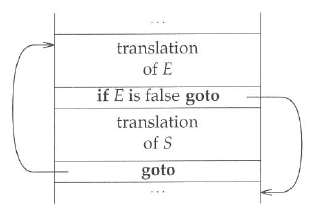04 Structured Programming
Structured Programming Context¶
CA sequential computation consists of sequence of actions. These computations are dynamic occur during program execution
Program text is static
It is essential that the program text represents the computation that occurs when the program runs
Design Principles of Imperative Languages¶
- Structure of program text should help understand what program does. Reliability of structured programs make them easier to modify for efficiency
- Language must allow underlying machine to be used efficiently
Structured Control Flow¶
A program is structured if the flow of control through the program is evident from the syntactic structure of the program text.
This is done by making structured statements single-entry, single-exit
Sequential Statements¶
sequence of statements
A compound statement is a block of code, which is a grouped statement enclosed in some manner, such as {...}, begin ... end
Selection/Conditional Statements¶
if ... else¶
if <exp1> then <stmt1>if <exp1> then <stmt1> else <stmt2>- Nested conditionals
switch...case¶
switch(exp)
{
case const1:
; // stmt1
break;
case const2:
; // stmt2
break;
default:
; // default stmt
}
Properties
- Case constants can appear in any order
- Case constants need not be consecutive
- Several case constants can select the same sub-statement
- Case constants must be distinct to avoid ambiguity
Notes
- Pascal gives error if none of the cases are selected
- Pascal uses
elsecase instead ofdefaultcase
if ... else vs switch ... case¶
Case statements are preferred over if ... else when we have adjacent conditionals. Otherwise, use if … else
// ✅
switch(s)
{
case 1:
case 2:
case 3:
}
// ❌
switch(s)
{
case 1:
case 2000:
case 30000:
}
// ✅
if (s == 1)
else if (s == 2000)
else if (s == 30000)
When using cases, a jump table is created, which contains entry \(i\) that is machine instruction to jump to code for case \(i\). The no of entries in the jump table \(= \max - \min + 1\). However, only the cases that are in the our code are actually used.
Compiler uses jump table if atleast half of the entries are used. Else, the compiler uses a hash table instead.
Iterative/Loops Statements¶
- Definite Loop Known number of iterations
- Indefinite Loop Number of iterations is only known at run time
- Infinite loop Loop keeps iterating
While¶
while <exp> do <stmt

Do-While¶
repeat <stmt> until <exp>
For¶
for <id> = <exp> to <exp> do <stmt>
Components
- index/iterative variable
- Step
- Limit
Handling Special Cases¶
breakcontinue
Return Statements¶
return <exp>
Sends control from a procedure back to a caller carrying the value of the expression. If return is not inside a procedure the program halts.
Break vs Return
- Break : control goes out of a loop
- Return : control goes out of a procedure
Goto Statements¶
Basically unconditional jump